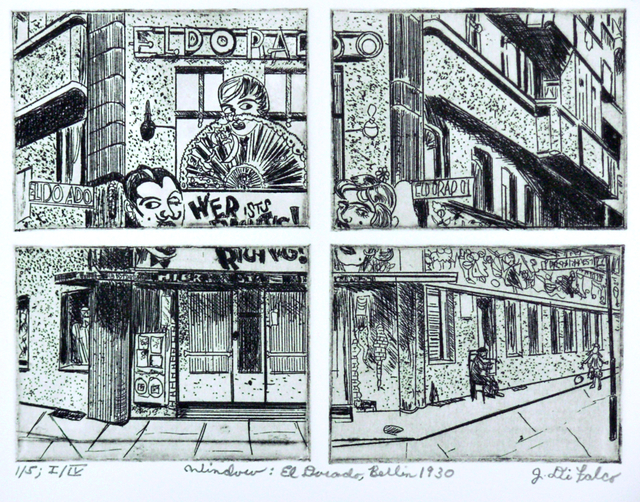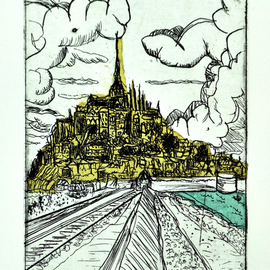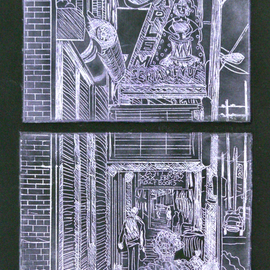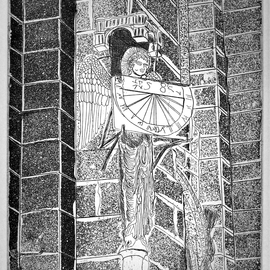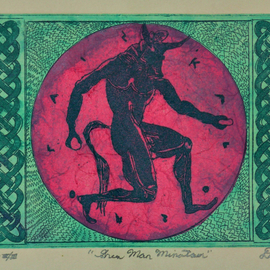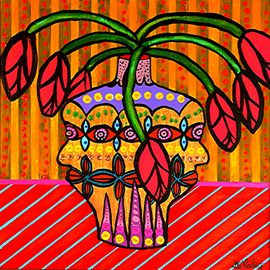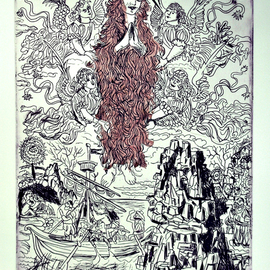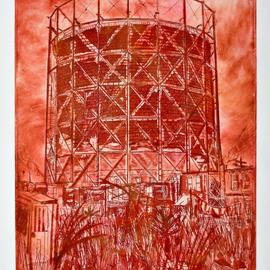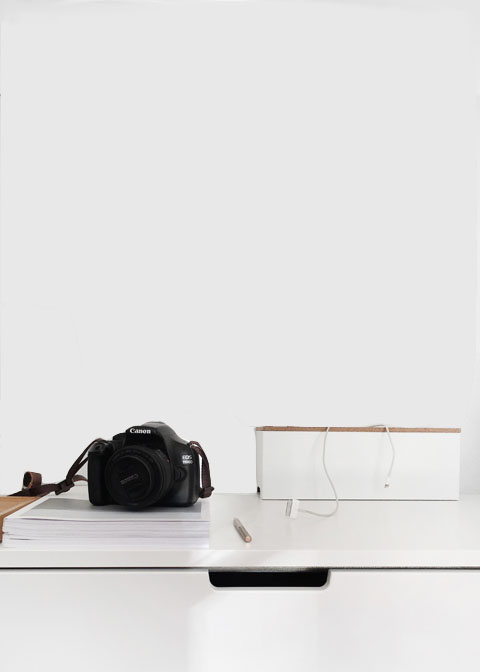Window To Berlin 1930 Printmaking By Jerry Di Falco
Artwork For Sale ❯ Printmaking ❯ Jerry Di Falco ❯ Holocaust ❯ Window To Berlin 1930
Artist:
Jerry Di Falco
Title:
Window To Berlin 1930
Price:
Year:
2017
Medium:
Size - (USA):
14 W x 11 H x 1 D (inches)
Size - (metric):
35.6 W x 27.9 H x 2.5 D (centimeters)
Theme:
Edition:
Original
Artwork ID:
613927
PDF Copy:
Artwork Description:
THE PRICE OF THIS ETCHING INCLUDES A BLACK PAINTED WOOD FRAME WITH GLASS AND ACID FREE MAT. THE FRAME MEASURES 11 INCHES HIGH BY 14 INCHES WIDE. THE WHITE MAT CONTAINS A BLACK INNER TRIMMED EDGE. THE ARTWORK ARRIVES WIRED AND READY TO HANG ON YOUR WALL, AND A WALL HOOK AND NAIL ARE INCLUDED. This work is the SECOND etching in Di Falco’s CABARET series entitled, “Tears for Berlin”. It is the First Edition of four editions, and each edition is limited on only five prints. An archived photo from Das BUNDESARCHIV, a German on line image and photographic archive, inspired this multiple plate intaglio print. It is executed on four individual zinc plates that are placed on the printing press bed, two plates above two plates, simultaneously to produce a single image. This give the work a “window” effect, thereby commenting on viewing a past reality. Each plate measures 3 inches high by 4 inches wide, and the overall image is 6.5 inches high by 8.5 inches wide. The print paper measures 11 inches high by 15 inches wide. The German Cabaret movement was one of the most avant garde art genres of the last century. It combined elements of music, theater, performance art, and political satire. Many feel it also popularized the gay and lesbian bar scene of today. The El Dorado Cabaret had a long and complicated history. It first opened on March 22, 1922 by entrepreneur, Ludwig Konjetschni, who publicized it as a “Meeting Place For The International World”, directly targeting homosexual community by advertising in gay and lesbian publications. In 1927 El Dorado moved to the central entertainment district in Schöneberg at Lutherstrasse 30, directly opposite the famous Scala Variety Theatre. Konjetschni moved his cabaret to larger premises and found the Grand Cafe Luitpold on Motzstrasse, opening the brand new Eldorado early in 1931. Marlene Dietrich, Claire Waldoff and the Weintraub Syncopators performed there, and it was a regular venue for transvestites and transexuals. In July 1932, the Chief of Police, Kurt Melcher began implementing strict catholic policies of the new Von Papen government he proclaimed, “an extensive campaign against Berlin’s depraved nightlife” and ordered a ban on same-sex couples dancing in public in October of 1932. Ludwig Konjetschni closed the Eldorado and handed the premises over to the local fascists, the Sturmabteilung SA– many of whom had worked for him. The SA turned the Eldorado into their new local headquarters and it became a center for the Nazi activity. With this, one of Europe’s most colorful art scenes collapsed. The Eldorado played a key role in ‘ I Am A Camera’ – the 1955 film adaptation of Christopher Isherwood’s ‘Goodbye To Berlin’.
Artwork Keywords:
Original Printmaking
